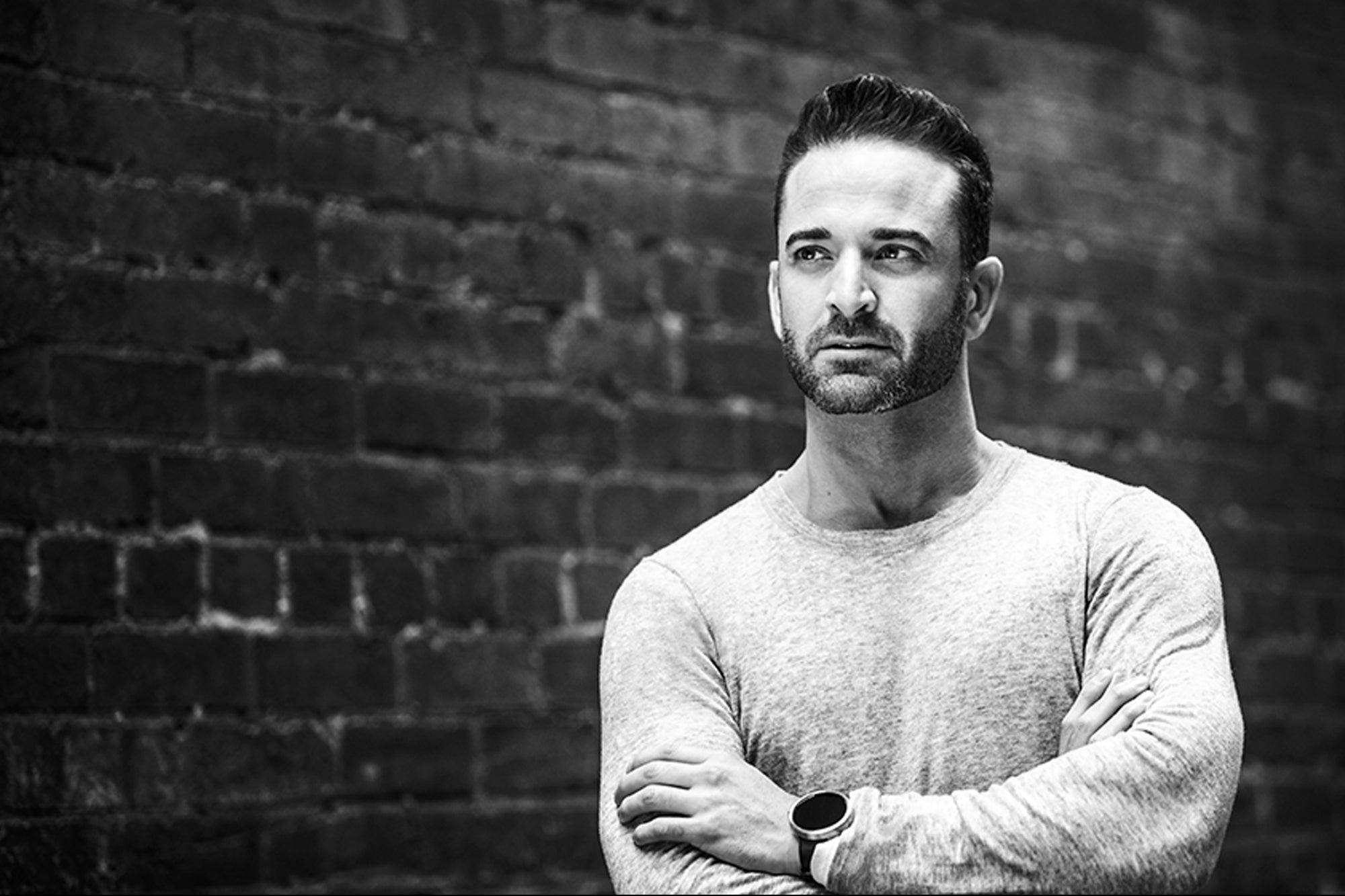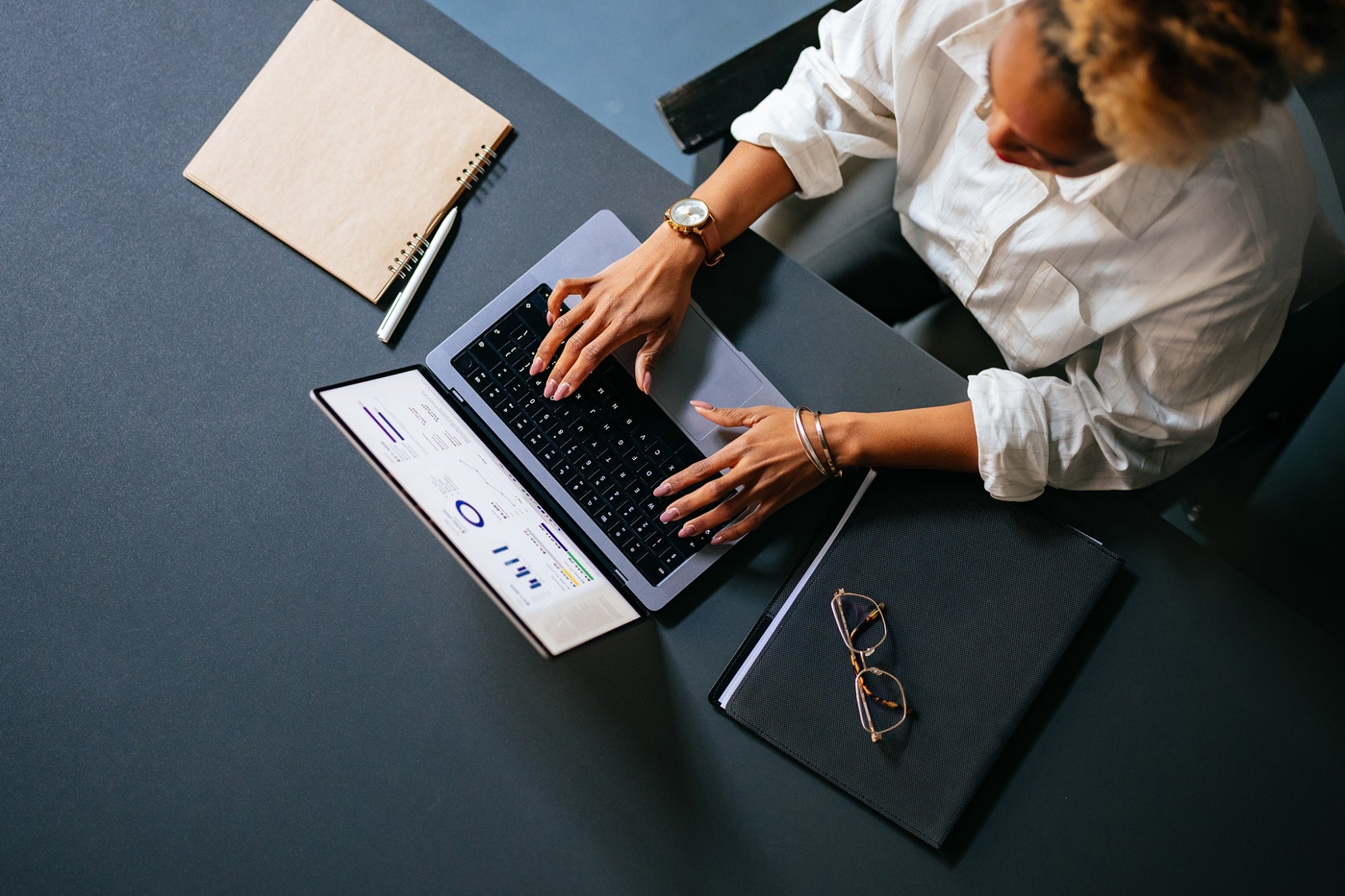AFFILIATE MARKETING
What is Affiliate Marketing? Pros & Cons, And How To Profit in 2023

You’re starting to see the term everywhere, but you’re wondering what is affiliate marketing? Keep reading for the ultimate guide to affiliate marketing, including its different types, how to make money with it, and its pros and cons.
What is Affiliate Marketing?
So, what is affiliate marketing? Let’s review the affiliate marketing definition:
Through affiliate marketing, marketers earn commission by promoting products through an affiliate link. When a sale is made through the affiliate link, the marketer that promoted the link earns a commission from the sale.
These affiliate links can be promoted on a website, blog post, podcast episode, YouTube channel, social media account, and more.
Most commissions from affiliate marketing are earned by making a sale. However, marketers can also earn money by generating leads, free-trial users, app downloads, website clicks, and more.
How to Start Making Money with Affiliate Marketing?
Affiliate marketing is a great way to make money because it typically doesn’t require any start-up costs. Joining an affiliate program and getting an affiliate link is usually free. This is because the money is earned after the sale is made, meaning it doesn’t cost the partner money upfront.
To help you become a successful affiliate marketer, let’s break down this marketing strategy step-by-step:
- Join an affiliate program and obtain your affiliate links.
- Create and publish an ad that promotes the affiliate product.
- Your target audience engages with the ad.
- The potential customer is sent to the affiliate website to view the product or service.
- The customer makes a purchase, thus triggering an affiliate sale.
- The affiliate partner records the affiliate sale.
- An affiliate commission is sent back to you, the affiliate marketer.
If you feel like you need more guidance on how to become an affiliate marketer, we have a course suggestion for you. The Affiliate Lab is an affiliate marketing course. It was created to teach participants to build, rank, monetize, and eventually flip affiliate marketing websites.
This online course includes 160 videos and can be completed at your own pace. It takes an in-depth discussion of the exact methods and templates the founder, Matt Diggity, uses to grow his own agency and portfolio of sites.
Whether you’re looking to flip your affiliate site or keep enjoying its monthly income, this course will help you get there. Click here for $200 off The Affiliate Lab course.
Want to see more options? Check out our post on the best affiliate marketing courses to help you make money.
Affiliate Marketing Types
While the process of forming an affiliate partnership might feel easy to you, you can try many types of affiliate marketing. Whether you consider yourself an expert or want to learn more about affiliate marketing for beginners, knowing the different types you can engage in will help you know where to target your affiliate marketing efforts. Let’s review a few different types of affiliate partner marketing.
Involved Affiliate Marketing
Firstly, we are going to discuss involved affiliate marketing.
Involved affiliate marketing occurs when the marketer promotes only products and services they’ve used themselves and deeply believe in.
This type of affiliate marketing is seen as the most trustworthy. This is because it’s founded on authenticity by the marketer and trust with their audience. Influencer marketing is a form of affiliate marketing.
This type of affiliate marketing requires more time and effort to build an authentic connection with your audience. However, this also makes it one of the most sustainable options. Having this authentic relationship with your target audience means they’ll trust your recommendations, earning you more sales.
On the other hand, it also means you should be choosy with each affiliate merchant you partner with. While you might be turning down potential partnerships if the product or service doesn’t meet your standards, it will be better for your affiliate business in the long run.
This type of affiliate marketing effort can include authentic promotions like:
- Instagram Stories providing your genuine review of a product
- YouTube video discussing in detail how you use the product you’re promoting
- Blog posts detailing your experience with a particular service
- TikTok video showing how useful the product is
Related Affiliate Marketing
The second form of affiliate marketing is related affiliate marketing.
Related affiliate marketing occurs when affiliate marketers promote products and services that are related to their specific niche. However, they don’t currently use them.
These types of affiliate marketers are typically already content creators. This is because they’re using their existing platform and audience to promote these products and services. These affiliate marketers have influence, which makes their target audience trust their recommendations despite the fact that they’ve never used the product or service they’re promoting. For example, influencer marketing is also a form of related affiliate marketing.
It’s considered “related” because the products and services are relevant to their existing audience. However, the marketer isn’t promoting the products based on their personal experience with them.
The risk with this type of marketing is that it can put your reputation as a thought leader in danger. For example, if you promote a product or service that doesn’t live up to your hype, you could lose the trust of your audience. Once you’ve lost the trust of your followers, it’s very tough to earn it back.
Unattached Affiliate Marketing
As the name suggests, unattached affiliate marketing is the most withdrawn form of affiliate marketing work.
Unattached affiliate marketing occurs when the marketer has no attachment or authority on the product they’re promoting. As an affiliate marketer, you don’t have a relationship with your target audience or the product or service you’re promoting.
This type of affiliate marketing campaign involves creating pay-per-click advertisements for a product or service, directing traffic to that affiliate link, and hoping they make a purchase. This can include Google Ads, Facebook ads, banner ads, and more.
It’s attractive to people who don’t want to or aren’t already big-time content creators with an engaged audience. You don’t need to be a thought leader in your niche in order to start promoting products or services. Furthermore, you don’t have to spend the time or energy building those relationships with your target audience.
While this method doesn’t involve building that relationship, you do need to be savvy in your pay-per-click campaigns. If you’re not able to create effective ads that earn clicks, then this type won’t work for you.
Affiliate Marketing Examples
Now that you understand the concept of affiliate marketing and how to make money from it, let’s explore a few examples.
Amazon
The Amazon Associate program is one of the most popular forms of affiliate marketing.
Through the Amazon Associate Program, participants promote some of the millions of products available on their website. This is typically done by creating an Amazon storefront and linking to it on their website, podcast, or social media. After the sale is made, the affiliate marketer earns a percentage of the value of the sale. These percentages are preset by Amazon, and they often change.
Here is just one example of the many promoters of this popular affiliate network.
The first picture shows a TikTok video promoting the user’s latest product find from Amazon.

The link in his TikTok profile takes you to his Amazon storefront, pictured below:

This affiliate marketing program offers a low barrier to entry. It also offers a wide variety of available products to promote. This means that no matter which niche you occupy, you can find products uniquely helpful to your specific audience.
Blog Site: Wirecutter
The New York Times acquired Wirecutter. This blog site earns money by writing about products and listing affiliate links.

With this model, the site earns money by posting lengthy product reviews and linking to each product. This is a great example of how you can create a website and fill it with blog posts for the purpose of earning additional income.
Pros and Cons of Affiliate Marketing
As affiliate marketing’s popularity continues to rise, how do you determine for yourself if it’s worth diving in? Whether you’re a small business, digital marketing professional, or an influencer, making an informed decision is important. To help you decide if building an affiliate network is right for you, we discuss some of the pros and cons of affiliate marketing below.
Pros
There are many pros to building an affiliate network. Let’s dive right into discussing them.
The pros of affiliate marketing include the following:
- Low cost: Joining an affiliate marketing program requires little to no cost. Affiliate commissions are earned after the sale is made. This means that money is exchanged after it’s earned, thus eliminating the need to pay upfront.
- Easy execution: While the burden of inspiring a sale falls on the affiliate marketer, the job of filling the order falls on the affiliate partner. This means that you don’t have to order products, fill an order, provide a service, or offer additional customer support as your affiliate partner does.
- Remote work: One of the biggest draws to affiliate marketing is that it can be completed remotely from anywhere. It doesn’t require you to drive into an office at specific times. This means you can start building your own income at any time from anywhere.
- Low risk: Affiliate marketing requires little investment, so it’s a very low-risk business venture. You don’t have to invest a significant amount of time, money, or resources to begin.
- Easily scalable: If you find yourself asking how much do affiliate marketers make, the answer might happily surprise you! This venture is as scalable as you would like it to be. Once you find partnerships and promotional methods that are working for both you and your target audience, these affiliate marketing efforts should be easily scalable.
Cons
You’re now aware of the benefits affiliate marketers experience. Now, let’s also review some of the cons of affiliate marketing. These cons include:
- Tests your patience: Executing an effective affiliate marketing strategy requires time, patience, and consistency. You will not get rich overnight off of one affiliate link. However, with consistent effort, your hard work will start to pay off.
- Adhere to affiliate partners’ rules: When you choose to partner with a specific affiliate program, you have to follow the rules of that program. Your affiliate link will be revoked if you do not follow their rules. Every other affiliate partner has to adhere to these rules too, which means you’ll have to work extra hard to stand out from your competition.
- Inconsistent pay: When you engage in affiliate marketing, you’re earning money when the sale is made. This means you’re earning money sporadically, not on a bi-weekly basis, like with a consistent corporate job.
It’s Time to Get Started
Joining an affiliate program can be a low-cost and low-risk way to earn extra income. With consistent effort and an effective strategy you can start earning passive income from affiliate marketing!
AFFILIATE MARKETING
AI Marketing vs. Human Expertise: Who Wins the Battle and Who Wins the War?

Opinions expressed by Entrepreneur contributors are their own.
Uncover the truth about AI in marketing and why it’s a ticking time bomb for unprepared businesses! As AI revolutionizes the marketing landscape, understanding its long-term impact is crucial.
In this video, I dive deep into the reality of AI marketing, exposing the myths and revealing strategies to stay ahead of the curve. Learn why AI might play in your favor for the next 3 years, but could spell trouble if you’re not prepared for what’s coming. Discover how to leverage AI tools effectively while developing a future-sighted approach that will keep you competitive in an AI-driven world.
Download the free ‘AI Success Kit‘ (limited time only). And you’ll also get a free chapter from Ben’s brand new book, ‘The Wolf is at The Door – How to Survive and Thrive in an AI-Driven World.’
AFFILIATE MARKETING
5 Financial Blind Spots That Could Be Preventing You From Making More Money

Opinions expressed by Entrepreneur contributors are their own.
Money can often be the barrier between being stuck where you are or breaking through to the next level. This includes having or not having a budget, using it properly, hidden revenue or even misaligned goals — all of which influence your growth trajectory. These four common secrets have helped my company elevate our clients to the next level.
1. Financial transparency for ROI
The first blindspot we often notice with new clients is not having a clear reporting connection between your tools, like ads and a CRM like HubSpot, to see which channels drive the most significant return on investment (ROI). Do you know your best-performing channels? Or your best-performing piece of sales copy? What is the most opened document that leads to a closed deal?
And we’re not just talking about marketing and sales; this applies to many connected platforms — for example, the closed-loop revenue or your ERP systems. When things are not connected, they are disjointed and siloed. You end up flying blind. Without connecting your marketing tools with your revenue tools, and with that being CRMs, finance platforms, or ERPs, to name a few, there is a disconnect, and the arms and legs end up moving in different directions.
Here’s a simple example we see all the time: If you knew that one channel drove more deals by a 75% faster conversion rate, wouldn’t you invest more time and energy in that channel than one that only had a conversion rate of 10%? Many people don’t want to share the revenue numbers within the company, but all of that information informs the other departments; without sharing these revenue numbers, your money secret is keeping it in hidden silos.
2. Strategic investment for avoiding blind spots
Another financial blindspot is not investing in marketing. We have had prospects come in with no budget and no internal marketing team, but we want to grow by 150% and spend a total of $1,000. I wish achieving growth like this was possible, but unfortunately, it’s not. The old adage that you get what you pay for, or it takes money to make money, speaks the truth. Your investment goals should match your growth goals. The amount of money invested should be measured not just by short-term, quick wins but also by looking at long-term investment to growth.
You would never measure an HR department strictly on the number of hires. However, looking at the whole picture of longevity amongst many other important KPIs, You would not use an HR department for a few months. It is something that is constant and needs care and attention. Marketing is no different — if you strictly only measure marketing by the number of leads, you are missing out on the full picture. Marketing helps push leads through nurture campaigns, creates automation, leads scoring, builds new campaigns and tests, supports sales enablement activities and many other components. A buying cycle is rarely a straight line to click and buy unless we’re discussing Amazon.
That said, everyone has budgets, margins and bumper lanes they need to stay in. I am by no means saying throw your budget to the wind, but your goal should match your budget. If you have modest growth goals, be realistic about the budget needed to get there. Set incremental micro goals but stay the course for long-term growth.
Related: You Won’t Have a Strong Budget Until You Follow These 5 Tips
3. Data-driven decisions to save money
Another money secret that costs companies is spending without the data to back it. We had a company inquire about a new website, a full blow-up, new navigation, new content, new page layouts, migration onto a new CMS, a new theme and the works. They said they had a $75,000 budget for the whole project. In theory, it sounds great, right? Willing to invest? Check. Has a budget? Check. Know what they want the end result to be? Check. But when we asked them the next question, they looked at us like we were crazy, “Do you have data that backs the changes you are looking to make?” Are you running a tool like Hotjar to see real user data behind how these proposed changes will impact your existing inquiries and the only source the sales team was currently using for leads?
The answer was no. When the heat map was overlaid, do you know what happened? Well, they were looking to build that new navigation out and replace the old one — nearly 90% of the traffic was going to two pages of their site directly from the navigation, both of which they had originally wanted to remove. In this case, it wasn’t just about having the money but also about making sure the decisions you make with the budget are informed by real data: user data, sales data, marketing data and more. The more informed you can be by closing the loop on your data, the better your end result will be.
Related: Want to Be Better at Decision Making? Here are 5 Steps to Better Data-Driven Business Decisions
4. Modern marketing channels to drive growth
What is likely costing you the most is using old-school channels without the ability to measure. Companies have spent the last decade on traditional marketing channels and are switching to digital. The company’s historical growth has relied on things like trade shows, print, postcards and online magazines. We ask what the ROI you have seen by each channel is, and rarely can they share a specific revenue number and say it is for brand awareness. Some of the budgets can be over 50 to 100 thousand dollars spent on these traditional methods, but there is no ROI attached, yet they continue them.
When the pandemic happened, we saw a massive influx in businesses shifting from once only boots on the ground to digital. The lockdown changed everything; there were no more trade shows, no more door knocking and no one picking up their mail or faxes daily. It made traditional selling channels challenging and obsolete and forced a new level of openness to try new ways to get the job done. In the example of running online magazine ads there are lots of ways to capture them, we can use UTM tracking, referral analysis or create a custom landing page for the offer and capture the leads directly. Without running them to a landing page or form, you rely only on the online publication for leads and analytics. We’ve had people show a list of just names, no emails to follow up with, or only show a random number of visitors to the page, not a single name. It’s important to know what they will provide for reporting and tracking when you publish or use traditional channels. The rule of thumb is to use connections and tools that leverage old-school methods into technology and not blindly spend on channels that cannot be measured.
Stop wasting time, energy and revenue on these blind spots. They have easy solutions, so you can avoid them and focus on growing your business!
AFFILIATE MARKETING
How Nvidia Pivoted From Graphics Card Maker to AI Chip Giant

A decade ago, Nvidia was a major graphics card maker, vying with competitors like AMD and Intel for dominance. Now it’s an AI giant with 70% to 95% of the market share for AI chips, and the brains of OpenAI’s ChatGPT. It’s also the best-performing stock with the highest return in the past 25 years.
Why did Nvidia invest in AI chips over 10 years ago, ahead of the competition? CEO Jensen Huang and board member Mark Stevens, Nvidia’s two largest individual shareholders, talked to Sequoia Capital partner Roelof Botha to explain what Botha called “one of the most remarkable business pivots in history.”
Nvidia’s original product was 3D graphics cards for PC games, but company leaders noticed by the mid-2000s that the PC market was hitting a growth limit.
“We felt we were always gonna be boxed into the PC gaming market and always knocking heads with Intel if we didn’t develop a brand new market that nobody else was in,” Stevens explained.
Jensen Huang, co-founder and chief executive officer of Nvidia. Photographer: Lionel Ng/Bloomberg via Getty Images
That need for a new market intersected with a product Nvidia already had on hand: its graphics processor unit, or GPU, which could be used to power tasks outside of gaming. Researchers at universities across the world began exploring the graphics cards, eventually building advanced computers with them.
Related: Is It Too Late to Buy Nvidia? Former Morgan Stanley Strategist Says ‘Buy High, Sell Higher.’
Huang recalled meeting a quantum chemist in Taiwan who showed him a closet with a “giant array” of Nvidia’s GPUs on its shelves; house fans were rotating to keep the system cool.
“He said, ‘I built my own personal supercomputer.’ And he said to me that because of our work… he’s able to do his work in his lifetime,” Huang said.
Other researchers, like Meta AI chief Yann LeCun in New York, began reaching out to Nvidia about the computing power of its chips. Nvidia began considering the AI market when AI had yet to enter the mainstream and was a “zero billion dollar market” or a market that had yet to materialize.
“There was no guarantee that AI would ever really emerge because, keep in mind, AI had had many stops and starts over the last 40 years,” Stevens said. “I mean, AI has been around as a computer science concept for decades. But it had never really taken off as a huge market opportunity.”
Huang and other company leaders still believed in AI and decided to invest billions in the tech in the 2010s.
“This was a giant pivot for our company,” Huang said. “The company’s focus was steered away from its core business.”
Huang highlighted the extra cost, talent, and skills Nvidia had to account for with the pivot, as it affected the entire company. It took 10 to 15 years of effort, but that business decision led to Nvidia powering the AI revolution with an early ChatGPT partnership.
“Every CEO’s job is supposed to look around corners,” Huang said. “You want to be the person who believes the company can achieve more than the company believes it can.”
Related: How to Be a Billionaire By 25, According to a College Dropout Turned CEO Worth $1.6 Billion
-

 SEARCHENGINES5 days ago
SEARCHENGINES5 days agoBillions Of Google goo.gl URLs To 404 In The Future
-

 SEO7 days ago
SEO7 days ago26 Common SEO Myths, Debunked
-
SEARCHENGINES4 days ago
Daily Search Forum Recap: July 22, 2024
-

 SEO5 days ago
SEO5 days ago11 Copyscape Alternatives To Check Plagiarism
-

 SEARCHENGINES6 days ago
SEARCHENGINES6 days agoGoogle Core Update Coming, Ranking Volatility, Bye Search Notes, AI Overviews, Ads & More
-

 SEO6 days ago
SEO6 days agoGoogle Warns Of Last Chance To Export Notes Search Data
-
SEARCHENGINES3 days ago
Daily Search Forum Recap: July 23, 2024
-

 AFFILIATE MARKETING6 days ago
AFFILIATE MARKETING6 days agoThe Top 5 AI Tools That Can Revolutionize Your Workflow and Boost Productivity















